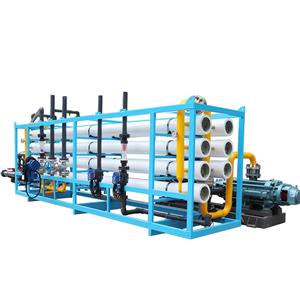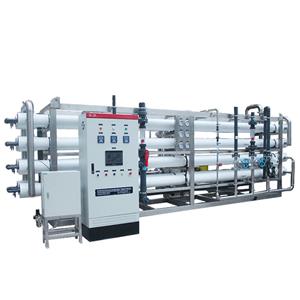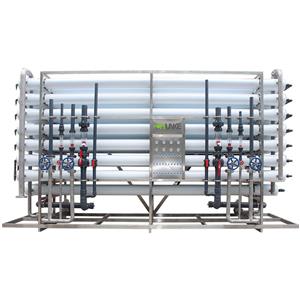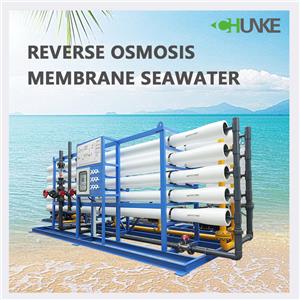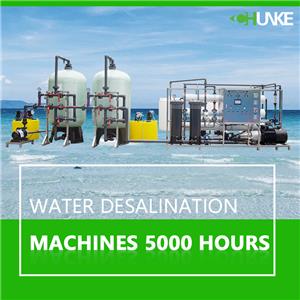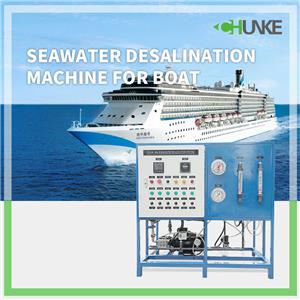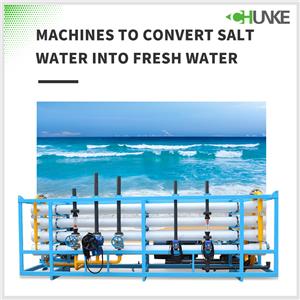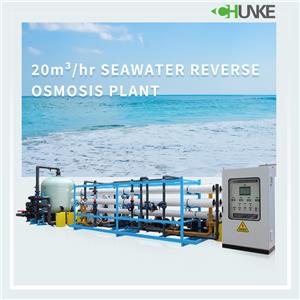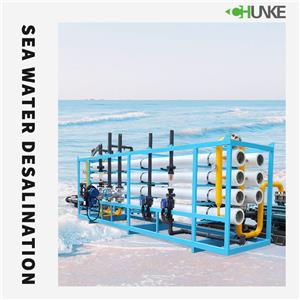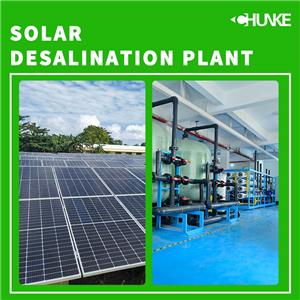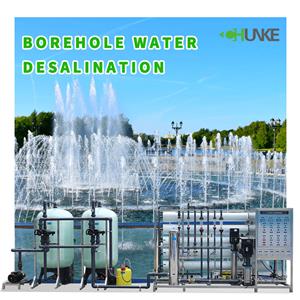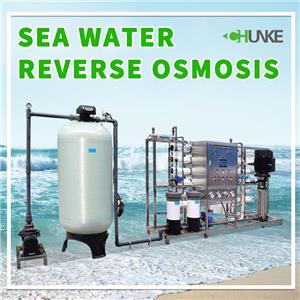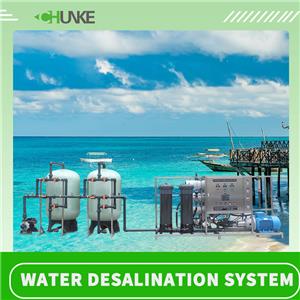-
07-22 2024
Which reverse osmosis membrane is used for seawater desalination?
Types of reverse osmosis membranes used in seawater desalination: 1. Spiral-wound reverse osmosis membrane, 2. Flat-plate reverse osmosis membrane, 3. Hollow fiber reverse osmosis membrane.
-
07-17 2024
What are the components of a 5000L/hour seawater desalination machine?
Components of a 5000L/hour seawater desalination machine: The seawater desalination machine converts seawater into drinkable fresh water through a complex process. Its main components include pretreatment system, reverse osmosis (RO) system, post-treatment system and auxiliary equipment.
-
07-09 2024
Is there a desalination device on board? Is it expensive?
Taking the reverse osmosis device with a daily output of 50 tons of fresh water as an example, its daily energy consumption is about 1000 to 1500 kWh. Calculated at 0.1 US dollars/kWh, the daily energy cost is about 100 to 150 US dollars.
-
06-17 2024
Is there a machine that can turn salt water into fresh water?
Reverse osmosis technology is currently the most widely used seawater desalination method. Its working principle is to separate water molecules from salt water under high pressure through a semi-permeable membrane, leaving salt and other impurities.
-
06-14 2024
How many kWh does a 20m³/hr seawater RO unit consume per day?
According to experimental data, the power consumption required for a 20m³/hr reverse osmosis device to operate for one day (24 hours) under ideal conditions is about 240 kilowatt-hours (kWh). This data shows that the power consumption per cubic meter of fresh water is about 0.5kWh,
-
05-21 2024
What Is the Biggest Problem With Desalination?
One of the main issues with seawater desalination is the high energy demand, and carbon emissions from the energy production process can have a negative impact on the environment. Concentrated brine by-products from the desalination process are also a major concern, and these chemicals can pose a potential threat to human health if not handled properly.
-
05-20 2024
How to Carry Out Solar Desalination?
Solar seawater desalination usually uses solar evaporation devices to heat seawater until it evaporates, and then collects fresh water through condensation. In this way, drinking water can be produced at low cost and with low energy consumption. In addition, the solar desalination device can be adjusted according to actual needs and is suitable for small-scale and large-scale production.
-
05-09 2024
What is borehole water?
Desalination is generally not required. Borehole water is a water source extracted from deep underground through drilling technology. This water usually comes from underground aquifers, which can range in depth from tens to hundreds of meters. Because borehole water comes from deep underground, it is generally less susceptible to surface contamination and is considered a high-quality water source in many areas. Therefore, it can be drunk directly without desalination.
-
05-07 2024
Is reverse osmosis suitable for seawater desalination?
Reverse osmosis technology is not only suitable for seawater desalination, but is one of the most advanced, effective and environmentally friendly seawater desalination technologies currently available. This method shows extremely high efficiency in the seawater desalination process and can quickly convert seawater into clean fresh water. Reverse osmosis technology uses less energy and produces significantly fewer greenhouse gas emissions than other desalination methods.
-
05-07 2024
Who invented seawater desalination technology?
The invention of desalination technology originated in the mid-20th century and was first patented by Alexander Zarchin. His desalination method is based on freezing seawater to form pure water crystals in a vacuum environment, which are then melted to create salt-free water. Chachin's invention laid the foundation for the early stages of desalination technology, but scientists and engineers produced many innovations in the field in the decades that followed.

